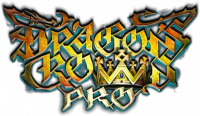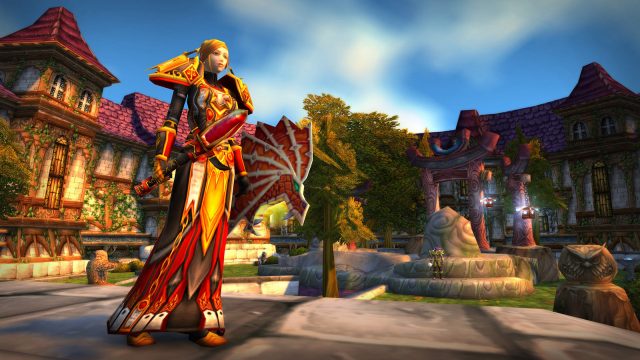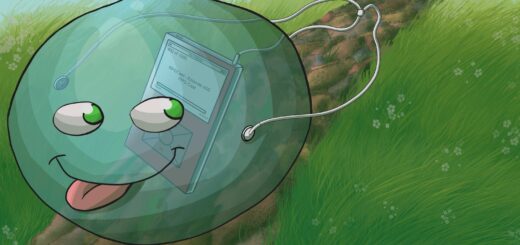Whatcha Playing: August 2019
RPGamer’s recurring feature providing a look at what the staff is playing outside of games for review is back. It should come as no surprise that Fire Emblem: Three Houses has captured the staff’s attention this month, but Grandia, Yakuza 3, World of Warcraft Classic, and Dragon’s Crown also make an appearance.
With that introduction out of the way, whatcha playing?
Cassandra Ramos

For reasons I won’t get into, I have not played as much Fire Emblem: Three Houses, or video games at all, as I wanted to this month. I’m hoping to fix that soon, but I suppose I can concentrate on Three Houses, since that’s the game I really wish I had more time for. I’m nearly done with Super Paper Mario, so I’m hoping to make a big old post in next month’s update!
I’m up to Part 1, Chapter 4, in the middle of a battle during the Goddess’s Rite of Rebirth. It’s a miracle I’ve managed to avoid major spoilers thus far. I’ve only recently been able to throw tea parties for characters and still haven’t recruited anyone outside of the Black Eagles house yet. I imagine I still have a ways to go, though. I’m loving the characters, but one thing that irks is just how much of a self-insert Byleth is. I can’t speak for the remake of the third Fire Emblem game, which featured the first Avatar/My Unit character, but both Awakening‘s Robin and Fates‘ Corrin spoke a lot and had more in the way of personality. Maybe there’s some kind of story reason I’m missing or am not up to yet, but Byleth barely talks outside of combat. You can’t even customize their appearance like you can with the previous games, so it seems especially pointless to make them a silent protagonist. I’ll eat my words if something does happen later on.
I am finding the non-combat aspects of Three Houses interesting, which is good considering how many of them there are. The battles have been easy thus far. I don’t think I’ve used Divine Pulse once, though again, I haven’t fought many battles. Still, they are fun and quite engaging. I’m also really liking how involved the support conversations are in Three Houses. I would have been happy if they were fully voiced, like in Fire Emblem Echoes, but they do involve character models moving around instead of just portraits, and the conversations with Byleth are full-on events.
Joe Hanley

I am not a huge fan of mobile consoles. The smaller screens, lower resolutions, and worse graphics make it harder for me to enjoy the games. I’m glad to see Fire Emblem back on the big screen — where it belongs. The graphical capabilities of the Switch help bring the battles to life like never before. I can actually see the battlefield, and I’m no longer squinting to read the text. I keep my Switch docked about ninety percent of the time, but fans of the 3DS entries have the option to go mobile. I think Fire Emblem: Three Houses has something for everyone, whether you’re an old school Path of Radiance player like me, or a die hard Fates fan.
I especially like that all three stories are combined in one package instead of being spread across multiple products. I tried all three houses and the Blue Lions are the one I stuck with. I’m not ashamed to admit that I’m playing on Normal/Casual. Get that permadeath nonsense out of my face. Blue Lions has more of a focus on melee fighters than the other two, which I like. Characters like Dimitri, Sylvain, and Ingrid can shell out some heavy damage without getting knocked out by the enemy’s retaliation, while Mercedes handles healing duties and Annette gets some powerful spells. Byleth is very strong, so I can confidently deploy him to the front line. Byleth’s gender is purely aesthetic as far as I can tell but, unfortunately, that is the only visual customization available. Combat is more nuanced this time around. This makes the game more challenging and sometimes frustrating, as strengths and weaknesses aren’t always obvious. However, the ability to rewind mitigates huge mistakes, like accidentally moving a heavy armor character within range of a mage. Terrain modifiers add additional depth.
While the intense strategic battles still represent the bulk of the game, there is now a whole monastery to explore in between. The protagonist is the newest professor in charge of turning students into soldiers. Meaningful interactions help showcase each student’s unique personality and raise support levels, reminiscent of the social links from the Persona series. Various activities raise the professor level, which allows for participating in even more daily activities and more powerful weapon upgrades, creating a satisfying gameplay loop.
Characters are no longer locked into just one class or weapon type either. Inviting them to dinner, giving them gifts, or returning lost items raises their motivation. This in turn allows any of their stats to be raised during the weekly lectures. From there, additional classes can be unlocked. The other professors can help raise the protagonist’s stats, will assist in some battles, and can eventually be recruited. It is possible to recruit students from other houses, too.
Exceptional storytelling, characterization, music, voice acting, combat, and pacing have me hooked. Plus, with two additional stories to play and the promise of DLC, the amount of content and level of replay value are staggering. Finally, a game that earns its price tag. Who else but Nintendo could craft such a deep and meaningful single-player experience?
Robert Sinclair

I’m going to talk about World of Warcraft. I’ve found the grind in Battle for Azeroth to be a bit unappealing, especially what I have left to do to fly, so I was getting burnt out on it. I don’t really do dungeons because I more or less solo content due to having issues with other players in MMOs. I just have bad luck, so I stick to doing stuff that doesn’t rely on others. Funny way to play an MMO, though.
But you want to know what happened? World of Warcraft Classic hit and I pretty much have not stopped playing. The game is definitely still a grind, but I find all the extra ways that you can control your experience are really hooking me. For one, I missed the old skill trees from when I was playing back in Burning Crusade and Wrath of the Lich King, but I also missed the days of finding gear and actually using it and not just selling it to a vendor for some gold. When I get a green item, it feels exciting; when I make a bad move and get swarmed by guys and still come out of it without dying, it’s satisfying.
I don’t think Classic is for everyone, but if you like MMOs and don’t mind a slower, more methodical pace and a real sense of progression, then you might be one of the people Blizzard is selling this to even without the nostalgia factor. I know that I’m enjoying it and have even managed to find a guild that has been great.
Ryan McCarthy

This month, I spent a good chunk of time playing Oninaki for review. In addition, I’ve gone back to Dragon’s Crown Pro. Last time I talked about the game, I mentioned taking a break from it due to my lack of ability to play the online mode with other players. I felt like the repetition would be more pronounced if I tried to play the rest of the game by myself. Of course, that ultimately didn’t stop me from going back to it and doing it solo.
Despite my suspicions that continuing to play it solo would handicap my enjoyment, I was pleasantly surprised that the act of playing it that way was pretty painless overall. While I did have to grind through several of the levels a few times in order to obtain money to purchase items, there’s a zen quality to the gameplay that just felt really appealing to me. Also, I really loved the creativity involved in some of the boss fights in this game, like having to use a cannon to do major damage to the gargoyle gate and having to light statues in order to weaken another boss. And there’s no denying that the game just feels really good to play. It manages to feel fluid while still having enough crunch to give it enough oomph to keep it engaging.
I finished it all the way to the final boss, which I managed to kill after a few failed tries. I saw the end credits and the game automatically increased the difficulty to Hard and told me to collect the nine MacGuffins all over again. I’ll probably end up going back to the game at some point due to the previously stated zen quality. I can also play as another of the character classes if I want to.
Joshua Carpenter

Even though the Yakuza series is now one of my favorites, I bounced off it the first time I played the Yakuza 3 demo. Glowing reviews and a bargain-bin acquisition convinced me to give it another go and I fell in love with this JRPG brawler. After finally playing all the games in the series last year, I’ve been curious to return to the game that ignited my love for the franchise and see how it held up. Sega’s recent release of Yakuza 3 as a part of the Yakuza Remastered Collection on PlayStation 4 has finally given me an excuse to dive back into Kamurocho.
Because this was the first Yakuza game I played, originally the opening didn’t strike me as being as strange as it is with the proper context. After two different gritty crime dramas, the machinations of Japan’s criminal underbelly take a backseat in Yakuza 3 to the everyday concerns of running an orphanage full of young kids. Instead of chasing missing millions or being plopped in the middle of a family war, Kiryu is dealing with school bullying, pre-teen crushes, and a big mystery of missing allowance money. Combined with the transition to Okinawa, it’s obvious the developers were trying to set a different tone with this entry. After playing the first two crime-soaked games, the opening feels more out-of-the-blue.
But every time Kiryu tries to get out, they pull him back in. While he may have gone as far away from Kamurocho as he can get, rival politicians’ plans for Okinawa have the land that the orphanage sits on in their sights. To add to the drama, a man that is the spitting image of Kiryu’s deceased adoptive father is aligned with the forces trying to remake Okinawa and shooting anyone that gets in his way. So Kiryu has to dive back into the world of the yakuza if he is going to save the new home that he has built.
Coming back, there are some things that definitely don’t hold up. This collection hasn’t seen the visual upgrades that the Kiwami releases received. While the cutscenes still look great, the graphics outside them look much worse than I remember. Thankfully, this new version has managed to decrease load times on transitions between buildings. It’s not as seamless as the modern iterations obviously, but it is a welcome improvement.
After so much refinement over the past few years, the combat feels basic and a bit stiff in comparison to the modern entries. Nevertheless, it’s still a ton of fun to bash thugs into the pavement. Also, the series’ humor that I love is still there and now that I’ve played the earlier entries, the shock of someone appearing to be Kiryu’s father showing up as an antagonist has more impact. While it’s not as extensive an upgrade as the Kiwami games, it’s great to have the better load times and cut content from the original release on a more palatable platform for the masses of new Yakuza fans to enjoy.
Matt Masem

While there were other brand new games I could have been playing, or a couple-months-old game I should have been playing, the game that’s occupied most of my August has been the original Grandia, newly released in HD for the Nintendo Switch this month. After Dragon Quest, the Grandia series is the nearest and dearest to my heart and to this day I’ll still put it #1 in my book for best overall battle system. While it was a bit of a nervous wait for the game to release digitally on the afternoon of August 16 with zero reviews, and having heard stories of it being a buggy mess at previous conventions throughout the development cycle, I’ve found it 99% bug-free and 100% full of nostalgic moments.
The worst I’ve had happen in my Switch playthrough of the first Grandia game is one or two graphical elements being slightly out of place, a tiny pause between sound looping, and a space off here or there in two shop menus; all almost easily overlooked except to the keenest observer. There have been no other concerns, and the game just looks so pretty! Granted the backgrounds are most definitely straight out of the original PlayStation polygonal days, but the sprites look pretty and the game looks great in the 16:9 aspect ratio either docked or undocked. The familiar voices and music are bringing me back to the late 1990s, something that rarely happens to me as I almost never replay video games. Grandia is worth it though, and props to GungHo for making this happen.
While the story is cute, and the characters excellent, the best part of Grandia is the combat. Oh, how I’ve missed me some Grandia combat, and while the first game’s combat isn’t the best the series has to offer, it’s just so rewarding. Everything you do in Grandia‘s turn-based combat nets a reward. Cast a fire spell with Justin and his fire attribute goes up. Use a specific weapon, and that weapon’s skill goes up. Cast enough wind and fire spells and suddenly Justin’s learning lighting spells. The screen summarizing what’s been earned at the end of each battle provides so much joy, and I spend far too much time planning out what weapons or spells to use in future encounters to unlock new spells or abilities, all of which are quite transparently available to view in menus. The system encourages players to change weapons, spells, and tactics throughout the entire game, making for an engaging, ever-changing strategic experience where even battles against trash mobs can be rewarding. Have I mentioned how much I’ve missed this game?
That’s all for this edition of Whatcha Playing. Please join the discussion in the comments about the staff’s selections and what games you’re currently playing.






















Recent Comments